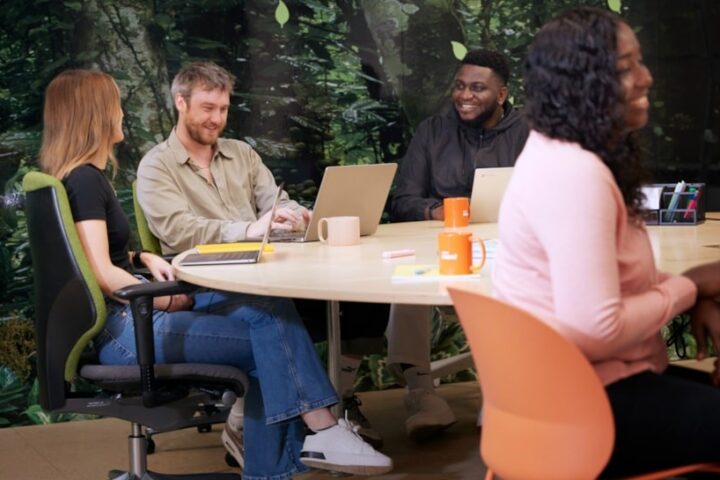Creating an inclusive workplace isn’t just about following the law, it also benefits your business.
Ableism, whether obvious or hidden, can hurt employees, limit their progression and damage company culture. Studies have shown that many disabled employees feel held back by negative attitudes and want better support at work.
Ableism isn’t just harmful, it’s costly. Disability discrimination cases in the UK rose 41% in 2024–25, and nearly one in four employers admit they’d be less likely to hire someone with a disability. Tackling ableism is about fairness, but it’s also about unlocking talent and driving innovation.
I have provided 10 practical tips to help employers and managers tackle ableism to create a workplace environment that enables every employee to succeed.
1. Understand what ableism looks like
Ableism can be hard to notice, but it has a big impact. It’s more than physical barriers like lack of wheelchair access; it includes attitudes such as questioning a disability because it isn’t visible.
Learning about ableism and unconscious bias is important because it’s the first step to making real changes in your business.
2. Review your language
Choose language carefully. Swap out terms like ‘wheelchair-bound’ or ‘suffers from’ for inclusive phrases such as ‘wheelchair user’ or ‘person with [condition]’.
Focus on the person, not the disability, and use a positive tone. This helps everyone feel respected and included.
3. Make physical spaces accessible
Ensure your workplace meets accessibility standards such as ramps into unleveled areas, lifts where there are multiple floors, accessible toilets and clear signage.
Accessibility should extend to meeting rooms, social spaces and emergency procedures.
4. Make proactive workplace adjustments
Don’t wait for colleagues to come forward, as they may feel uncomfortable asking.
Make it easy for everyone by openly sharing details about the reasonable adjustments available, such as:
• Assistive technology – screen readers, speech-to-text software, ergonomic keyboards
• Adapting workspaces – to suit mobility aids or specific physical requirements
• Accessible meeting materials – large print, Braille, audio formats
• Flexible schedules and breaks – for colleagues living with long-term health conditions
• Secure storage facilities – lockers for medicines, equipment, and other aids
• Uniform adjustments – alternative materials for sensory sensitivities, adaptive fastenings like Velcro instead of buttons or zips
• Accessible training and onboarding resources – captioned videos, easy-read documents
• Reserved parking spaces – close to building entrances
• Support with workplace travel or transport arrangements
• Employee support services – such as Employee Assistance Programmes or health assessments
For neurodivergent colleagues, consider additional adjustments such as:
• Flexible deadlines for tasks where extra processing time is needed
• Alternative interview formats, including written responses or practical assessments
• Visual aids for instructions, such as diagrams, flowcharts, or step-by-step guides
5. Include a Disability Passport
A Disability Passport is a simple document that records agreed workplace adjustments and support needs. It ensures consistency if an employee changes roles, managers, or locations, and avoids repeated conversations. Share information on how to request or update a Disability Passport to demonstrate your commitment to ongoing accessibility and inclusion.
By sharing these options, you will be giving everyone a clearer picture of the support available and showing your ongoing commitment to an inclusive and welcoming workplace.
6. Create inclusion policies
Regularly check your hiring, promotion, and review processes to find and remove bias. This helps make sure everyone has a fair chance. Share your diversity and inclusion policy openly so everyone knows what to expect and sees your commitment to a supportive, inclusive workplace.
7. Set up employee networks
Setting up employee groups or forums for disabled colleagues helps support inclusion and ensures everyone’s voice is heard. These safe spaces allow people to share experiences, raise concerns, and suggest improvements.
Listening to their feedback builds trust and shows a real commitment to change.
8. Train managers regularly
Managers play a crucial role in creating a positive and inclusive workplace culture. It’s important to give them regular training on disability awareness so they understand the different needs and strengths of disabled colleagues.
Training should also cover inclusive leadership, teaching managers how to support everyone fairly and adapt their approach to meet individual needs.
9. Support neurodiversity
Approximately one in seven people are neurodivergent, which means they experience and interact with the world differently. This includes conditions such as autism, ADHD, or dyslexia, and often brings unique strengths like creativity and problem-solving. It’s important to recognise and value these strengths to build a truly inclusive workplace.
To support neurodivergent colleagues, organisations should adapt working practices. Use clear and simple communication, give written instructions, and allow extra time for people to process information. Create sensory-friendly spaces by offering quiet spaces, adjustable lighting, or noise-cancelling headphones to reduce distractions.
10. Challenge ableist behaviour
Managers and employees should actively speak up and challenge when they notice discriminatory language or actions in the workplace. This includes correcting comments, jokes or remarks that trivialise disability and intervening if someone dismisses accessibility requests as ‘special treatment’.
By challenging these behaviours promptly and respectfully, managers help create an inclusive environment where all employees feel valued and supported.
Diana Podlewska Monteiro is inclusion partner at Bupa UK

















